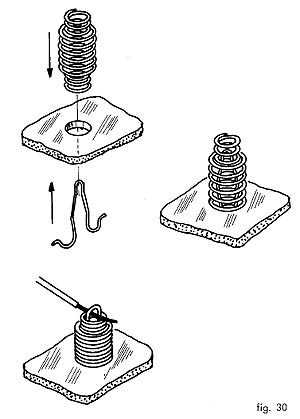 Decided to measure internal resistance on the Si570 kit. It's a somewhat impossible mission without proper test equipment, eg: an oscilloscope or similar.
Decided to measure internal resistance on the Si570 kit. It's a somewhat impossible mission without proper test equipment, eg: an oscilloscope or similar.One way somewhat acceptable of measuring the impedance is... to place another impedance and measure the voltage drop. If it drops to half the open voltage then the impedance is the same of the one placed in the circuit. That's a simple ohms law (voltage divider)
Now, you don't need to put an exact value impedance...because you don't know the internal impedance.... in the books an carbon resistor has the same impedance of it's resistance.... in real live if you don't go far on the frequency it's almost the same.
So....measure the rf voltage of your oscilator in open circuit, that will give you "Vosc" then place an resistor on the ouput and measure the rf voltage on that resistor, will give you "Vtest".
The formula for the internal impedance is one of this:
Rinternal = Rtest * ((Vopen/Vtest) -1)
or
Rinternal = Rtest * ((Vopen - Vtest)/Vtest)
You can assume R = Z for resistive circuits.
The formulae are equal just one mathematical pass more on the first one.
or if you are lazy then go to this online app to make some calculation:
http://www.sengpielaudio.com/calculator-InputOutputImpedance.htm
Now my results: 7 Ohm, 16 Ohm and.... -10 Ohm with 3 diferent Rtest resistors....will have to check again my procedure because something is wrong, I should never had a negative inpedance. The diference in 7 and 16 Ohm can be traced to resistor tolerance and measuring error.
Life is not linear!






.JPG)
.JPG)



















